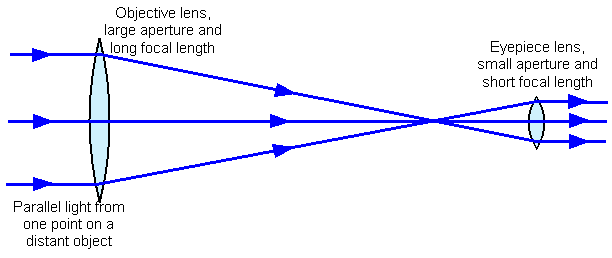What path does light take through a refracting telescope?
1 Answer
Refracting telescopes use lenses to bend incoming light. The typical layout for a refracting telescope involves a tube with a convex lens at either end.
Explanation:
Because telescopes are used for viewing objects that are far away, the incoming light rays are nearly parallel to each other. When they encounter the lens, the rays are bent toward the lens's focal point.
 )
)
When the rays are near the focal point they are closer together. This has the effect of making it brighter. At this point a second convex lens is introcuced. It is spaced so that both lenses share the same focus point. That way, when the light comes out the rays are parallel again.

The rays are then sent to the eye. Often, refracting telescopes will include a mirror to redirect the light to the eyepiece, but the overall idea is the same. One of the problems that refracting telescopes suffer from is chromatic aberration, where different wavelengths of light are bent at different angles.
 )
)
To minimize aberration, most refracting telescopes use very long focal lengths in order to avoid bending the light too much.

